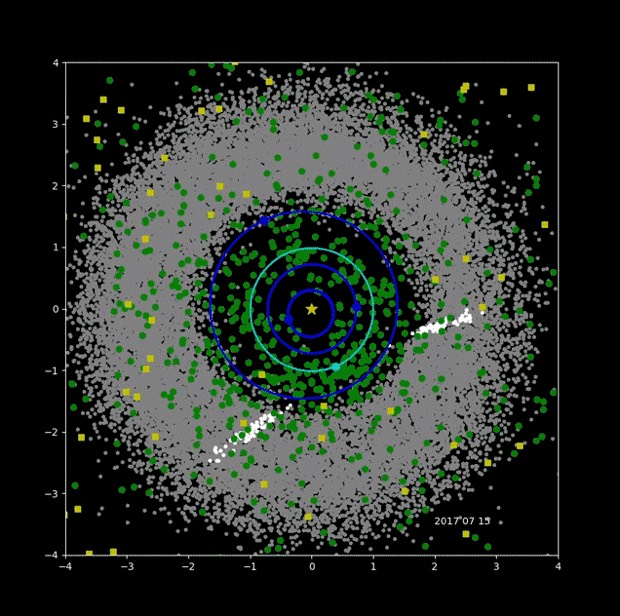
In four years of operation, NASA’s repurposed Near-Earth Object Wide-Field Survey Explorer – NEOWISE – spacecraft has completed nearly eight all-sky surveys, detecting nearly 30,000 objects including 788 near-Earth bodies and 136 comets. The NEOWISE archive now includes more than 10.3 million sets of images.
“In total, NEOWISE has now characterised sizes and reflectivities of over 1,300 near-Earth objects since the spacecraft was launched, offering an invaluable resource for understanding the physical properties of this population, and studying what they are made of and where they have come from,” said Amy Mainzer, NEOWISE principal investigator at NASA’s Jet Propulsion Laboratory in Pasadena, California.
Launched in 2009, the spacecraft was originally called the Wide-Field Infrared Survey Explorer, or WISE. During its two-year primary mission, WISE scanned the heavens twice to catalogue galaxies, stars and, closer to home, asteroids.
The spacecraft was decommissioned after its primary mission ended in 2011, but it was re-activated in 2013 and repurposed to search for near-Earth objects, or NEOs. It also is being used to characterise more remote populations, helping astronomers pin down their sizes and compositions.
NEOs are comets and asteroids that follow trajectories that can cross Earth’s orbit and thus pose potential threats. Ten of the objects discovered in the past year are now classified as potentially hazardous asteroids, or PHAs, based on size and how closely they can approach Earth.
